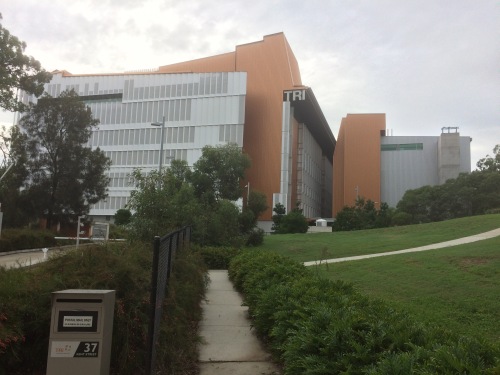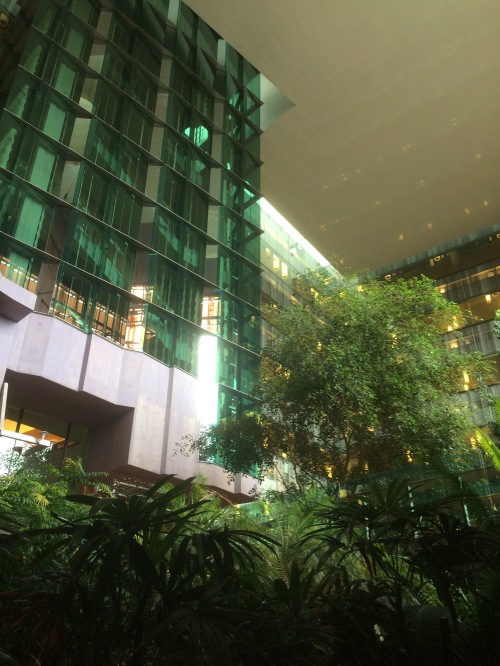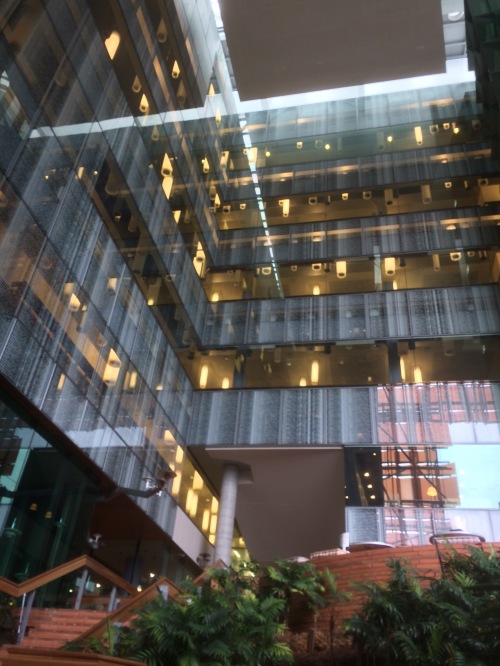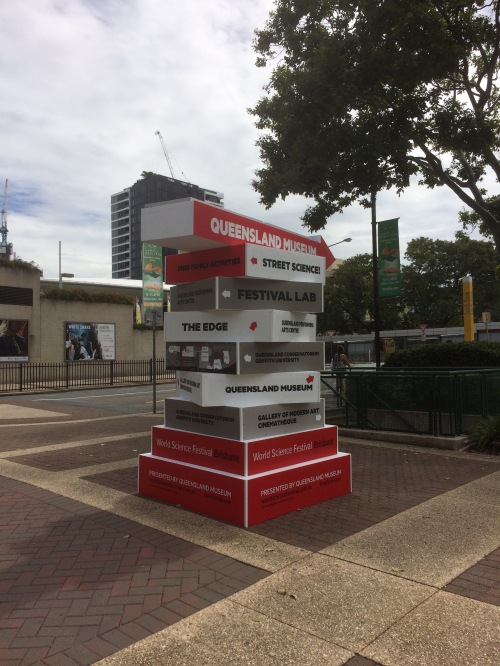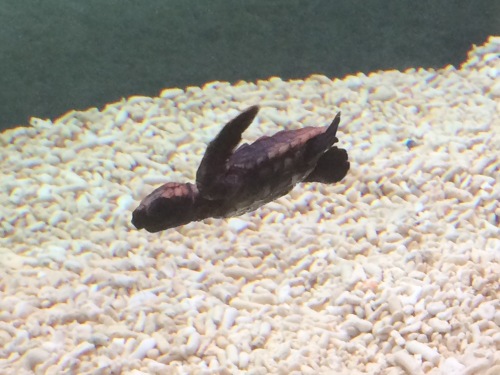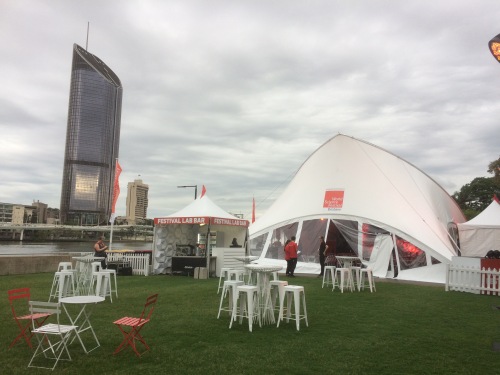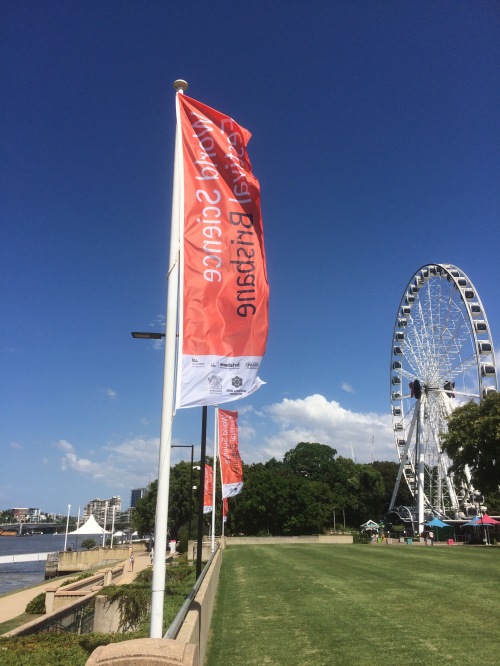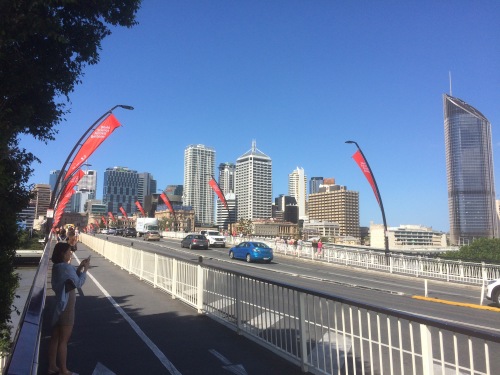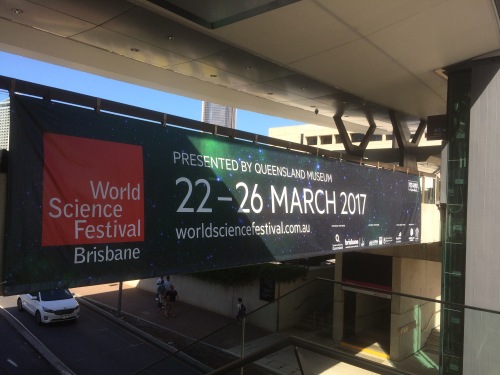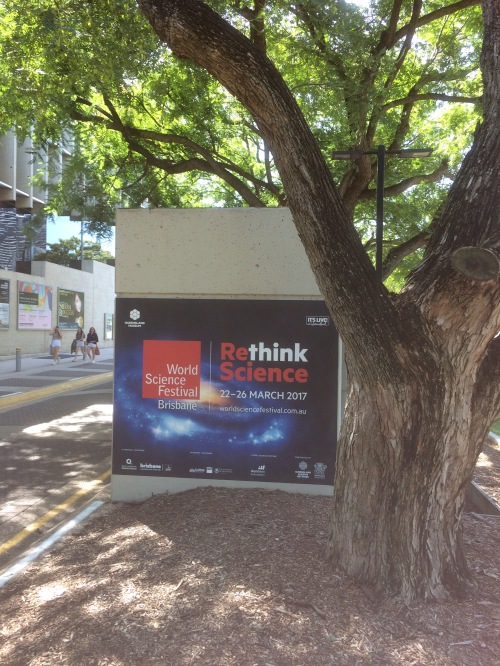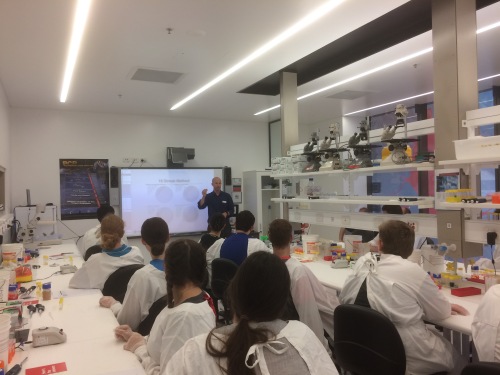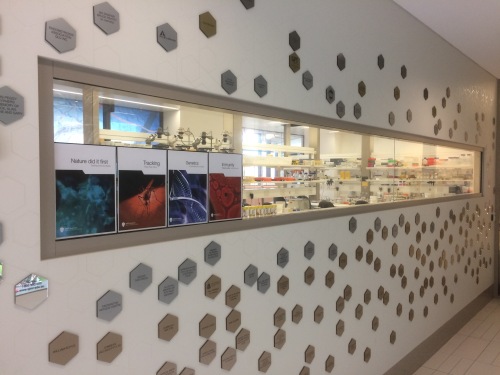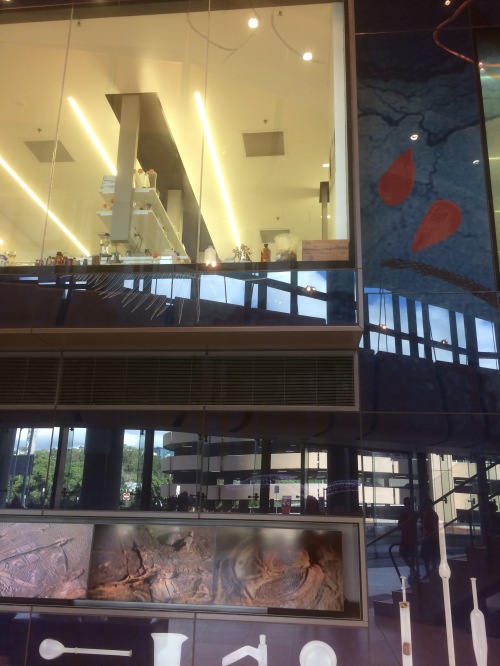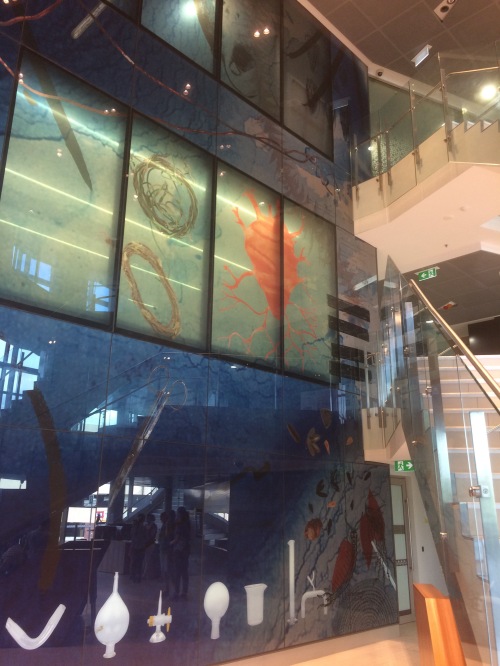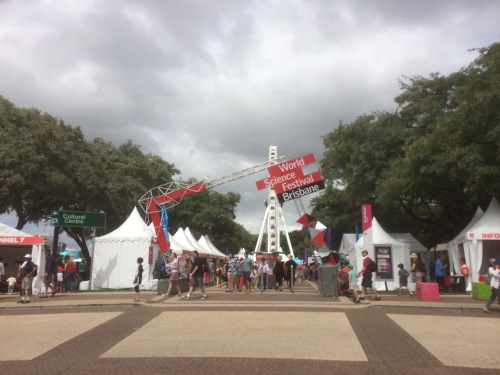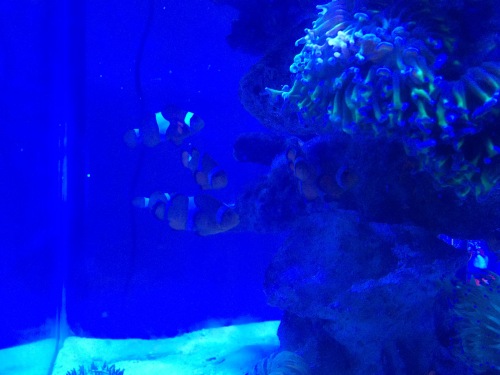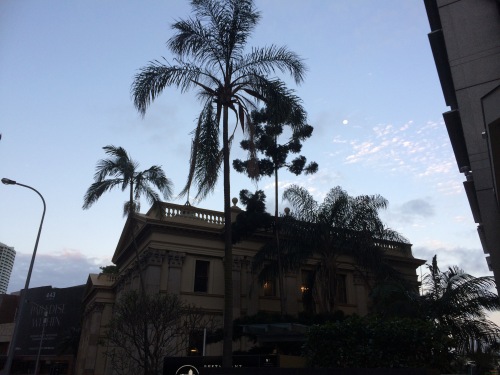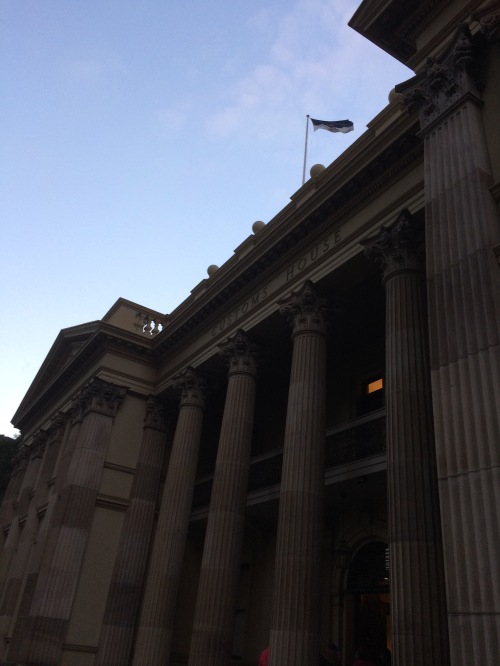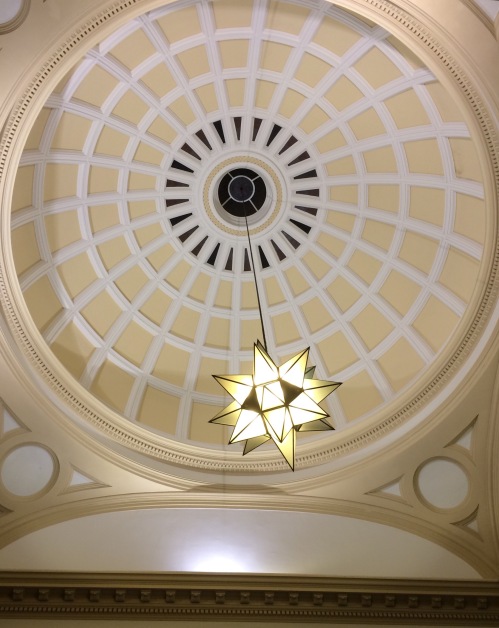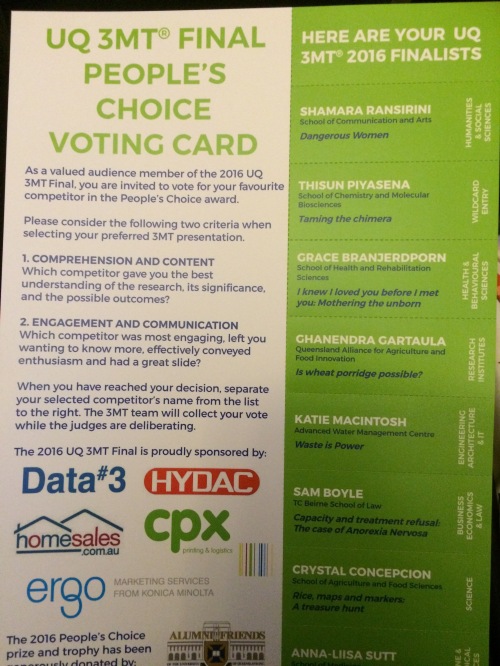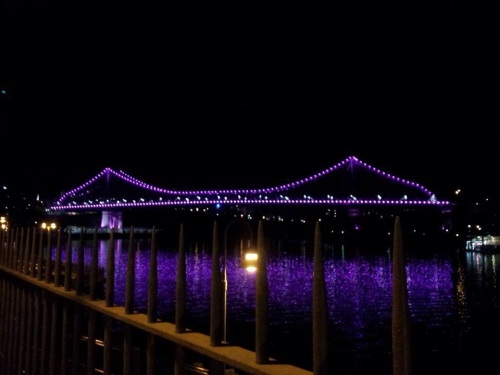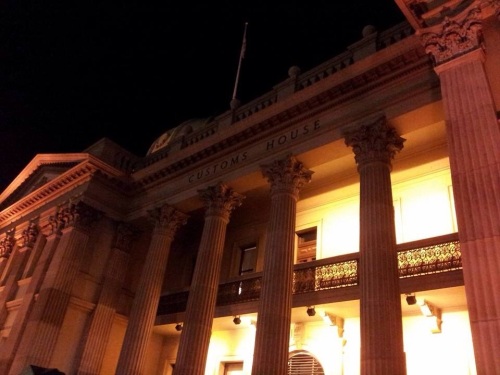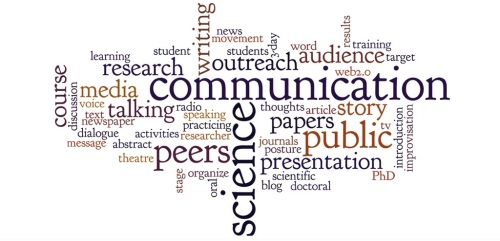The World Science Festival descended for its second year on our gorgeous sub-tropcial city. Day One of my volunteering at the Festival included –
- A stint at the Translational Research Institute (TRI) for the Cancer Crusaders Apprentice Program where high school kids, in an educational lab, observed cancer cells through a microscope & the effect of chemotherapy drugs on these cells. We watched time lapse videos where non-cancerous and cancerous cells containing the green fluorescent protein went through stages of cell division (mitosis). We could see the chromosomes aligned in the centre of the cells & then pulled towards the edges as the cell prepared to split in two. Amazing!!
- Helping out at the Queensland Museum on an interactive display for kids on the three major factors effecting the health of the Great Barrier Reef – increase temperature, land clearing and increased rainfall. Using wii technology kids moved their hands clockwise and anti-clockwise to change these factors and got to see first hand on a big screen the effect on a coral reef and its animal inhabitants
Between my shifts I spent sometime at the Museum checking out various exhibitions, including the Hatchery, an exhibition of some of the Museum’s most prized collections, and a multitude of natural history displays. The Hatchery is a display where the public can view Loggerhead turtles emerge from eggs and newly emerged loggerhead and flatback hatchlings swimming in aquariums. And this year they had Moon jellyfish (baby turtle food) on display in illuminated aquarium – so beautiful! I was in awe. Then I ventured on to look at the prized collections, which included an extinct gastric brooding frog (wow!!!), an exhibit of fossils unearthed from Geebung (north Brisbane) a few years ago (I blogged about it here)(very cool to see fossils of animals that lived in the area 50 million years ago), then on to displays of insects, birds, mammals, live green snakes, rainforest geckos, giant burrowing cockroaches and giant stick insects.
Phew! A fun and educational day!
